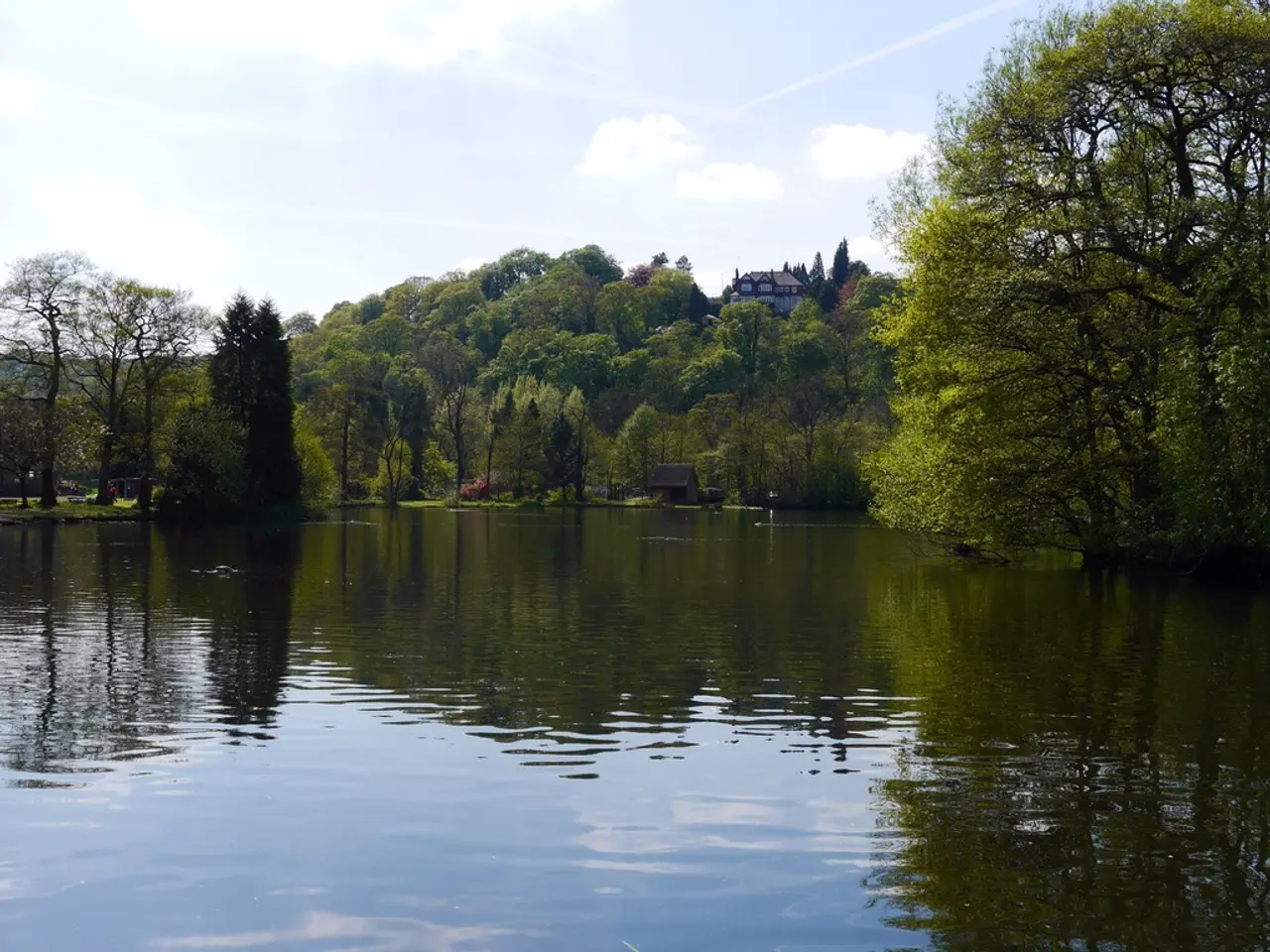Permaculture Design Making Use of Digital Mapping Techniques
In the world of sustainable farming, permaculture has emerged as a beacon of hope for creating resilient ecosystems and promoting long-term sustainability goals. This farming philosophy, which emphasizes reducing external inputs, boosting system efficiency, increasing biodiversity, and fostering self-regulation, is now being revolutionized by digital technology.
One of the key tools in this digital transformation is digital mapping. Online mapping platforms offer easy-to-use solutions for permaculture enthusiasts, providing tools for generating custom terrain maps, tracking land features, and planning water flow strategies. When choosing digital mapping tools, designers should consider user-friendliness, data accuracy, and integration with other software.
Geographic Information Systems (GIS) are another essential component in permaculture mapping. These systems allow for analysis of geographical relationships, creation of comprehensive site assessments, and visualization of complex environmental interactions. GIS tools help capture and analyze environmental data crucial for sustainable site planning, such as soil types, water flow, and vegetation patterns.
SketchUp, a popular 3D design tool, is widely used by landscape architects to visualize site layouts and design scenarios effectively. Its precision and visual clarity make it ideal for permaculture design projects. Farm mapping/design software, on the other hand, offers functionalities tailored for field layouts, crop rotations, and irrigation planning, supporting regenerative agriculture and permaculture systems.
New tech is making it easy for anyone to use permaculture mapping, regardless of location or scale of the project. Mobile mapping applications help with field research, providing simple interfaces for data collection and linking GPS points, photos, and notes without internet. Drones are also used for high-resolution topographical analysis and monitoring of permaculture sites.
Digital mapping enhances soil and water management, optimizes land use and layout, and improves community involvement in permaculture projects. It helps communities be more resilient by giving them tools for planning and adapting to environmental challenges. Participatory mapping techniques ensure everyone's voice is heard in the design process.
However, challenges remain. Technology access in remote regions, data privacy complexities, and a learning curve for new users are some of the obstacles faced in digital mapping for permaculture. Yet, with the rise of affordable and user-friendly tools, open-source platforms, and cloud-based options, these barriers are being gradually overcome.
Community mapping projects connect users with experts who know the area well, bridging the gap between traditional permaculture principles and modern innovation. Real-world examples, such as the Detroit Urban Agriculture Project, San Francisco's use of digital mapping for green spaces, and New York City's mapping of micro-climate zones for better food production, showcase the strength of digital mapping in tracking and assessing permaculture project developments.
In conclusion, digital mapping is not just transforming permaculture design processes, but also helping us understand and tackle environmental issues by combining modern tech insights with permaculture principles. It provides detailed maps, interactive tools for understanding terrain, and visual representation of landscape characteristics. By fostering sustainable designs, resource management, biodiversity enhancement, soil health improvement, water conservation, and carbon sequestration, digital mapping is playing a crucial role in creating lasting, healthy landscapes.
- Digital mapping platforms, like those for generating custom terrain maps and tracking land features, are valuable tools for permaculture enthusiasts.
- Geographic Information Systems (GIS) are vital for creating site assessments, analyzing geographical relationships, and visualizing complex environmental interactions in permaculture mapping.
- SketchUp, a popular 3D design tool, is used by landscape architects to effectively visualize site layouts and design scenarios for permaculture projects.
- Mobile mapping applications and drones are increasingly used for field research, site analysis, and monitoring in permaculture projects, even in remote locations.
- Digital mapping improves community involvement in permaculture projects, making communities more resilient by providing tools for planning and adapting to environmental challenges.
- Community mapping projects connect users with experts, bridging the gap between traditional permaculture principles and modern innovation, as demonstrated by real-world examples like the Detroit Urban Agriculture Project.
- By fostering sustainable designs, resource management, biodiversity enhancement, soil health improvement, water conservation, and carbon sequestration, digital mapping is playing a key role in creating lasting, healthy landscapes.




